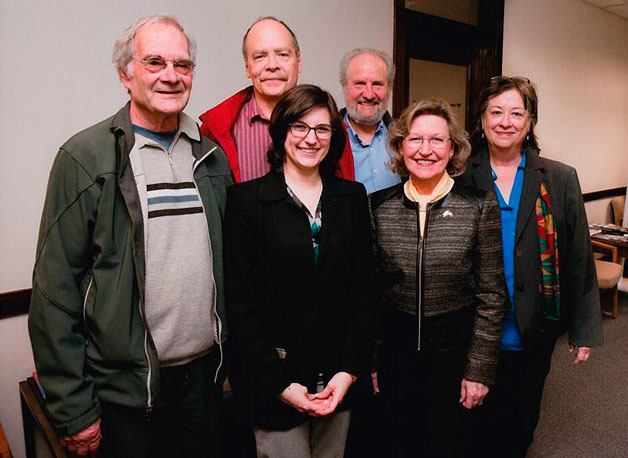An environmental advocacy group is transcending barriers of faith by working together toward a unified goal. And they’ve got the senate bill to prove it.
With the help of 10th Legislative District Sen. Barbara Bailey, R-Oak Harbor, representatives of the Greening Congregations Collaborative of Whidbey Island recently assisted in pushing forward the Toxic-Free Kids & Families Act, a bill that prohibits manufacturers of children’s products and family furniture from using Tris, a toxic flame retardant. It had been unable to reach the Senate for five years, until March 8, when it finally passed. The bill will be the strongest flame retardant ban in the nation.
The passing of the act was tangible evidence of what the collaborative, which consists of seven local churches on South Whidbey, could accomplish.
“It really highlights where we’re at as a community and as a collaborative,” said Ted Brookes, a representative of the collaborative who also played an integral part in moving the bill forward. “That’s the epitome of what were trying to do.”
The group raises awareness about humanity’s carbon footprint and other shortcomings through worship, education and community engagement by tackling issues big and small. The collaborative includes Langley United Methodist Church, St. Augustine’s-in-the-Woods Episcopal Church, Trinity Lutheran Church, St. Hubert Catholic Church, Unitarian Universalist Congregation of Whidbey Island, Unity of Whidbey and The Religious Society of Friends, all of which fulfill creation care commitments under the umbrella of Earth Ministry’s Greening Congregation certification program. Earth Ministry is a statewide leader in engaging the religious community in environmental stewardship and advocacy, according to its website.
By hosting educational forums, pub talks, film discussions and organizing road cleanups and work parties, the congregation is slowly but surely leading Whidbey Island to a “greener” state of living, in the hopes of stewarding what is shared by all humans: Earth.
“This is the one thing we absolutely have in common,” said Elizabeth Guss of St. Hubert Catholic Church. “If nothing else, we depend on the earth for our life and survival and we need to come together and work in those areas where we do in fact have common ground.”
Guss said the unification of different faiths and beliefs was a feat in itself, while it also helps shed light on just how determined members of the collaborative are in its cause. Guss said St. Augustine’s-in-the-Woods was the first to become a greening congregation on South Whidbey in 2008, while Langley United Methodist did so in 2010. The other churches in the collaborative joined in the years following, though representatives of the group hope more will follow suit.
While churches in the collaborative act as a whole on several fronts, each practices environmental-friendly activities as is required by the greening designation.
Brian Reid, a representative of St. Augustine’s-in-the-Woods who also helped lobby for the Toxic-Free Kids & Families Act, said among his church’s annual plans are clearing Honeymoon Bay Road of noxious weeds, improving energy efficiency by working with Sustainable Whidbey Coalition and Puget Sound Energy, and advocating environmental legislation that help protect and safeguard families, water and the island’s ecosystem. Reid hopes that efforts by the churches will lead to a sense of urgency amongst residents on South Whidbey as well as lawmakers.
“We’re seeing all the time the effects of climate change,” Reid said. “It’s very urgent. We need to in some way-shape-or-form get our government to realize that and work a lot faster.”
“You want a little bit of anxiety, but not terror,” he added.
Brookes, who often presents at forums hosted by St. Augustine’s-in-the-Woods, said the efforts, such as the work parties and environmental movie discussions, are beneficial for the community.
As for the collaborative’s future goals, Guss said they hope to continue figuring out the best and most efficient ways to work together as a unit.
“We’re new at this, so we’re working together to learn how to be more effective,” she said.
The act of collaborating is what excites Dianne Shiner, a representative of Langley United Methodist Church. By combing different faiths and viewpoints, the results can be both rewarding and enjoyable.
“It’s wonderful to talk out of the box of your own faith community because then you have different perspectives,” Shiner said. “It’s just fun to do it together.”



